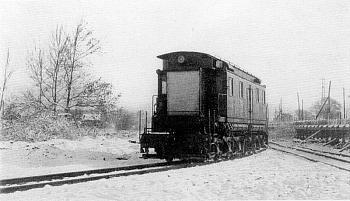| B A L D W I N L O C O M O T I V E S | 43 |
|
|
|
I n t e r n a l C om b u s t i o n L o c o m o t i v e s a n d V e h i c l e s By S. M. Vauclain  |
Therefore, when discussing railway motive power, the standard of comparison must be the steam locomotive, which occupies a strongly entrenched position from both practical and sentimental viewpoints. Its simplicity, ease of control and action under widely varying conditions of load are factors that its rivals must embody if they are to successfully compete with it in every-day service. With the established efficiency of modern internal combustion engines before him, the designer of railway motive power is naturally attracted toward their possibilities of employment within his special field of endeavor. The Diesel motor shows an overall thermal efficiency as high as 33 per cent, while steam locomotive performance is |
about 1/4 of this figure. But even with this
handicap, the steam locomotive of today is a
remarkably flexible and reliable travelling
power plant. I n order to properly compete,
no matter what the fuel economies may be,
the internal combustion locomotive must approximate
this same flexibility and reliability.
It must have ease of control, ability to start
a full tonnage train, and adaptability to the
rapid change in physical conditions met in
operation: such as variable speeds, gradients,
curves and weather conditions. It
must not be too complicated in detail nor
too heavy per horse-power developed.
Herein then are the basic features which
the designer must constantly bear in mind.
While a gain in thermal efficiency will
warrant an increase in initial cost, the price
must not be so prohibitive as to offset the
anticipated gain in cost of operation. The problem naturally divides itself into two general classes of power:—self propelled vehicles for light traffic and locomotive units for hauling trains equal in tonnage to those hauled by steam locomotives. The first division offers easier accomplishment, because the power required is low and the weight of engine and transmission details, compared with the entire weight of the vehicle, will make possible an economical |
